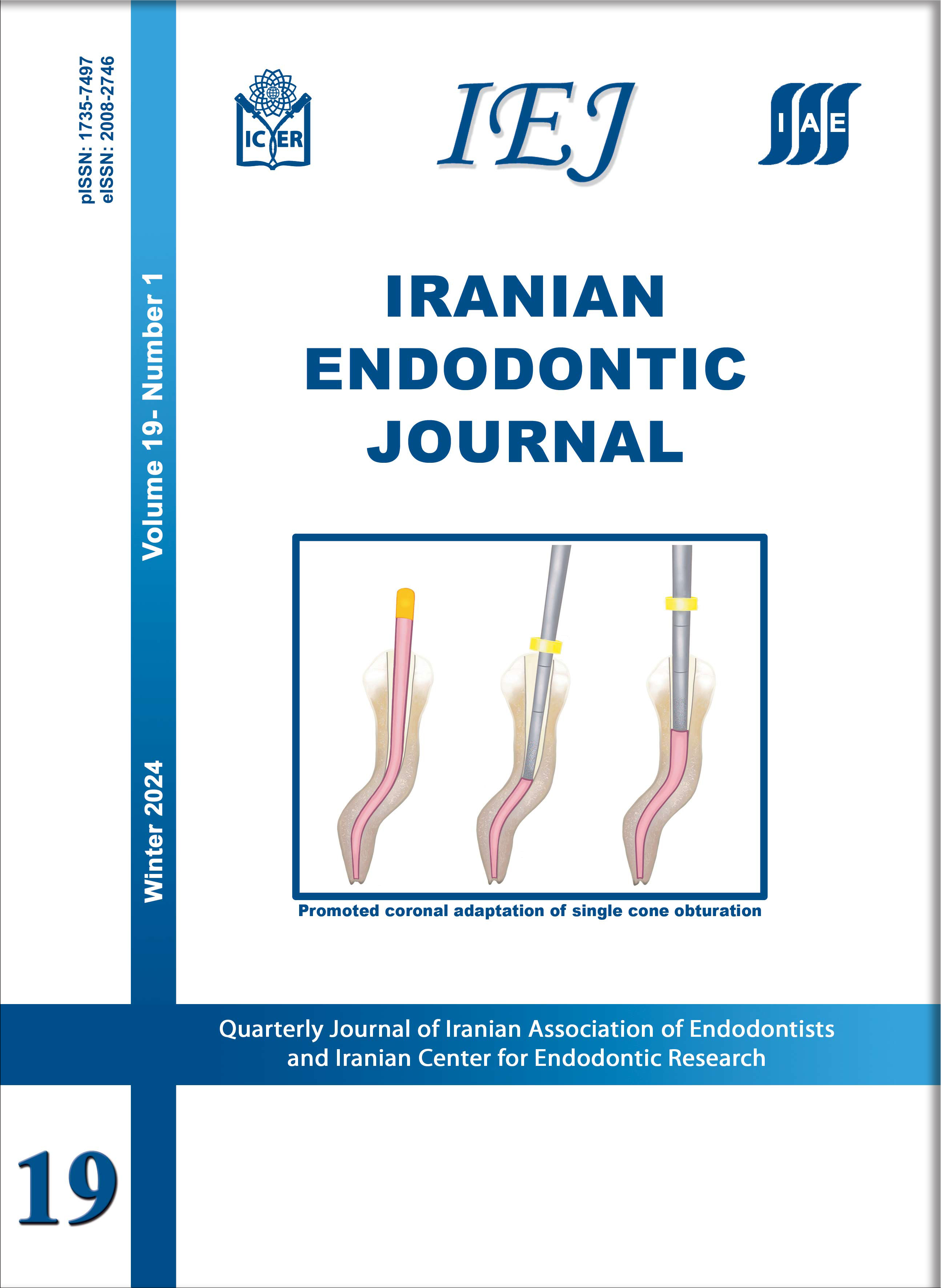Alterations of the Danger Zone after Preparation of Curved Root Canals Using WaveOne with Reverse Rotation or Reciprocation Movements
Iranian Endodontic Journal,
Vol. 10 No. 3 (2015),
4 July 2015,
Page 156-161
https://doi.org/10.22037/iej.v10i3.6579
Introduction: The aim of this study was to compare the changes that occur in the danger zone (DZ) after preparation of curved mesiobuccal (MB) canals of mandibular first molars with WaveOne instruments in two different movements [reciprocation (RCP) and counter-clockwise rotation (CCWR)] by means of cone-beam computed tomography (CBCT). Methods and Materials: MB canals of 30 mandibular molars were randomly divided into 2 groups (n=15); WaveOne/RCP and WaveOne/CCWR. Pre- and post-instrumentation CBCT images were assessed for changes in the dentin thickness in DZ (2 and 4 mm below the highest point of the root furcation) in both groups. Data was analyzed using the repeated measures ANOVA test. Results: There was no statistically significant difference between two experimental groups in terms of remaining dentin thickness at 2 and 4 mm levels below the highest point of the furcation (P>0.05). Conclusion: The efficacy of WaveOne instrument on changes of the dentin thickness in the DZ was not affected by different file movements.
Keywords: Danger Zone; Reciprocating Handpiece; Reciprocation; Rotation; WaveOne




